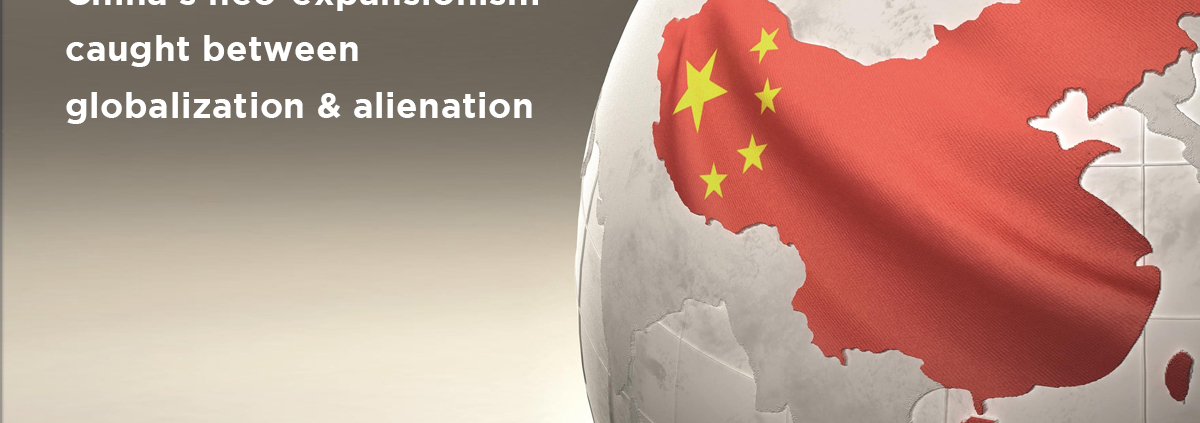China’s economic reforms of 1978 have eventually led to a curious and unique mix of part-privatization and breakneck industrialization, as a means to unlock monumental economic potential. Today, China is the leading exporter and the largest economy by PPP. However, there has also been a flipside to its phenomenal transformation.
The Chinese imperialism and expansionism are as old as we have records to attest to them. History is rife with examples of encroachment by China, much like the exploits of British Empire. The cause for current concern, however, is China’s neo-expansionism and debt-trap diplomacy – especially under the pretext of its BRI initiative. Despite strong resistance from India and Japan, as well as the US and a few European nations, China’s modern-day expansionist agenda is well underway.
Some might argue that China’s attempts to establish monetary hegemony is a reflection of the world order created by the USA, whose own economic footprint also knows no boundaries. However, it can also be demonstrated that in recent years, China’s imperialism has far superseded the more open and transparent influence exercised US. The Hong Kong protests, China’s refusal to acknowledge Taiwan’s sovereignty, encroachment in the South China Sea, and most recently, the evolving power dynamics with India, are few cases in point.
India–China relations: a collision course
As we are aware, there is no clear demarcation of the line of actual control between India and China. In the 50s, despite disagreements over the status of Tibet, the then Indian government led by Jawaharlal Nehru was instrumental in maintaining peace with China, simultaneously granting political asylum to the Dalai Lama. Unfortunately border disputes between the two nations undermined diplomacy, leading to wars in the 60s, where both sides incurred significant losses. Today, in hindsight, I’m proud that India set its own interests aside to protect and preserve the identity of Tibetan Buddhism, which was facing near-extinction post Chinese occupation.
Over time, India, along with China, emerged as two of the world’s fastest growing economies. Since Chinese hegemony relies heavily on its monopoly over global supply chains, the emergence of a power with demography and strengths that offer alternatives to the world did not sit well with the CPC. Hence the unprovoked military incursions, the widening trade deficit in favour of China, and the relentless opposition to India’s global aspirations.
A power center out of sync with the modern world
Watching footage of the plight of Uyghurs in China is not just unpleasant, it raises some very pertinent questions on the credibility of global bodies. It is about time the UN affiliates and human rights watchdogs take cognizance of systemic ethnic cleansing in China and hold the CPC accountable. The WHO has attracted a lot of criticism for its role in downplaying the severity of COVID-19, at the onset of the crisis, allegedly at the urging of the Chinese authorities. It never ceases to amaze me how progressive nations continue to do business with a country where Google is banned. What does China not want its citizens to know?
Censorship of media and the internet is at its zenith in China, while the opposite is true in India, where freedom of press is truly enjoyed, or even abused – as some argue. No information goes unreported in India, although the way of presentation and talking points vary from platform to platform, depending on political inclinations. In fact, China drove Washington Post and New York Times reporters out of the country in the wake of COVID-19 outbreak, after the CPC was suspected of downplaying the severity and under-reporting the casualty count.
The counter approach
India’s foreign policy lacks a clear vision, particularly towards China. The relationship we once shared with Russia is strained, after cozying up to the US. In the meantime, China has strengthened diplomatic ties with Russia and is encroaching on India through proxies. An example: Pakistan, whose public debt is 98.2% of its GDP, owes a fifth of it to China, which is more than it owes the IMF(1). In other words, Pakistan is at the brink of becoming another Sri Lanka – a sovereign country that has leased one of its ports to China, after insurmountable debts. In fact, I commend India’s attempts to buy out the leased port from Chinese clutches. But since the move failed to materialize, it calls for the Indian government to push the envelope. Lately Nepal has fallen prey to Chinese designs, leading to tension with India despite long-standing civilizational and cultural ties. Additionally, China has recently rekindled its territorial dispute with Bhutan, a loyal friend of India.
As a country that takes pride in our territorial integrity, we must exercise the entire range of diplomatic, military, economic options to counter China’s neo-expansionism. Taking a page out of China’s own book, India should form stronger alliances with Asian nations, particularly with ones that border China, to balance the power equation. We cannot rely entirely on Trump’s trans-Atlantic anti-CPC rhetoric to counter China’s adventurism. Taking into account the impending Presidential elections in the US, which could lead to change in diplomatic status quo, India must strategize for the post-Trump era by leveraging available opportunities like the proposal to expand the G7 to include it. If Putin remains in power till 2036, regaining Russia’s confidence too becomes a diplomatic imperative. Also, we should step up relations with dissidents in Hong Kong and the Taiwan government, as has been initiated by the US, the UK, Australia and Canada in recent months.
It’s important to remember that the recent Chinese military misadventures coincide with a low point in its global diplomatic leverage. MNCs were pulling out of China, with India emerging as the next-best alternative, when Galwan Valley witnessed the bloodiest Indo-Sino clash since the 60s. One cannot help but ponder on the ulterior motives, which were possibly aimed at stirring unrest in India and creating a hostile business environment.
Instead of falling prey, India must leverage China’s negative perception and strike while the iron is hot. The recent ban on a host of Chinese apps is a reflection of India’s delayed-yet-determined step towards hitting where it hurts the most. China’s private and state-owned enterprises have extended their business footprint across economies, giving the CPC an indirect control over other nation’s affairs. India should reevaluate its FDI policies concerning China, even if this has short-term economic implications.
The way I see it, today’s globalized economy has no place for kinetic wars. Both India and China cannot afford it. But China’s muscle-flexing diplomacy cannot go unanswered. To that end, the incumbent government must work harder to bridge the power asymmetry. I welcome the fast-tracking of fighter jets delivery, and the PM and the Defence Minister’s visit to ground zero, followed by the latter’s strategic visit to Moscow. Going forward, the Indian government has to employ a multi-pronged strategy and display strength on all fronts. Dictatorships, such as the one enforced by the Chinese Communist Party, only recognize strength and capability, not an olive branch.



